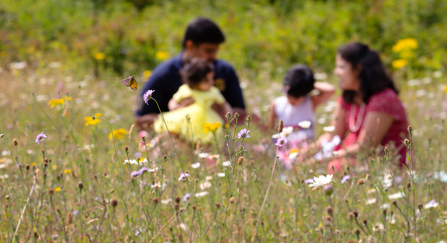It’s all about the availability of doctors’ appointments and tackling waiting times. As well as reducing the number of prescriptions and helping overstretched health departments. And yes – it is about saving money.
So what’s any of that got to do with nature? Well, more than you might think. When analysing our work in communities, health economists found something interesting. Wildlife Trust programmes targeting people with low levels of health and wellbeing delivered £6.88 of social value for every £1 invested. Could encouraging people to do activities in nature actually help the health minister with their to-do list? It can. Read on!
Let’s start with that question “What matters to you?”. It might be your family’s health and happiness or being able to afford a decent house. Maybe it’s getting a good education and job or having clean, safe, and relaxing natural spaces near where you live. These fundamentals are the building blocks to having good health.
Back in 1948, the World Health Organisation (WHO) defined being healthy as: a state of complete physical, mental and social wellbeing and not merely the absence of disease or infirmity. Will a conventional medical approach achieve this? No. Should it step in when we are ill and need medicine and expert care. Absolutely.
So how do we help people get to a complete state of wellbeing? The term “Social Prescribing” may be new to many, but the idea is as old as the hills. Like many ideas that last, it is rooted in common sense and evidenced by people’s lived experiences.


